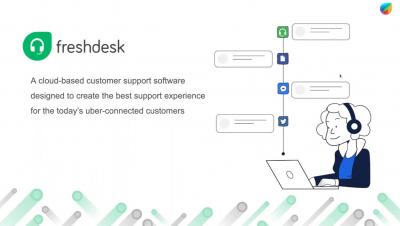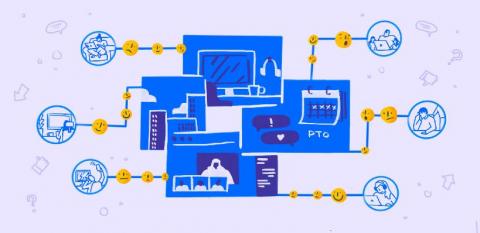Teams | Collaboration | Customer Service | Project Management
%term
How to "leave the office" when the office is your home
Remember that movie Groundhog Day? Where Bill Murray experiences the same day over and over and over and heartwarming hilarity ensues? Working from home can feel like a lot like that (minus the heartwarming hilarity). The hours meld together because there’s no natural divider to separate work time from personal time.
7 team-wide perks of project management software
It’s easy to look at project management software through the lens of a single goal: more successful projects. It’s true: 77% of high-performing projects are built with project management software. Companies that use project management software are better at staying on schedule, on budget, and on top of stakeholder needs. Those things create a better customer experience and a stronger bottom line. But remember, buyers are human.
5 ways project management software boosts transparency
When you hear the word “transparency,” project management software probably isn’t what comes to mind. Maybe you think of the window next to your desk. Unless the blinds are closed, you can see clearly into your yard. It’s not much different in the work context: Unless you have a reason to block the light, you should be able to watch what’s going on from where you’re seated. Project management software is that transparent window.
5 common project management implementation challenges
So you’ve decided on a project management software you want to introduce to your team. Great! Choosing a project management software is a challenge in and of itself. But now that you’ve found the perfect one, the real battle begins: implementation.
4 data points to watch from your project management software
Business is a battle, and the companies that best optimize their resources tend to win. But without a clear look at project-level data, it’s impossible to distribute those resources well. The right project management software shows you how and where your resources are spent. Organizing, executing, and analyzing projects is a lot easier when you can find it all on a single platform.
Slack on Slack: How we take some of the work out of legal work
Our legal team shares its favorite tips and tools for automating repetitive tasks, collaborating with outside counsel and much more, all inside Slack
The #1 Guide to Telecommuting your Customer Support Efficiently
Telecommuting or remote working is no longer only a strategy to scale up your customer service or globally distributing your support teams. It’s a growing necessity that is more about future-proofing your customer service against business-related uncertainties. Apart from being a developing global necessity, the need for telecommuting also entails the preferences of workers.
How to Asana: Find anything with advanced search
How responsive is your crisis response strategy?
As a native New Yorker, I almost get the feeling I’ve seen this movie before. I saw 9/11 up close. I experienced the 2008 financial crash from inside Goldman Sachs. I’ve been through bomb threats, water main ruptures, and a hundred other predicaments too banal to remember distinctly. But even having worked and lead teams through all that, I still find the COVID-19 crisis challenging to navigate.











